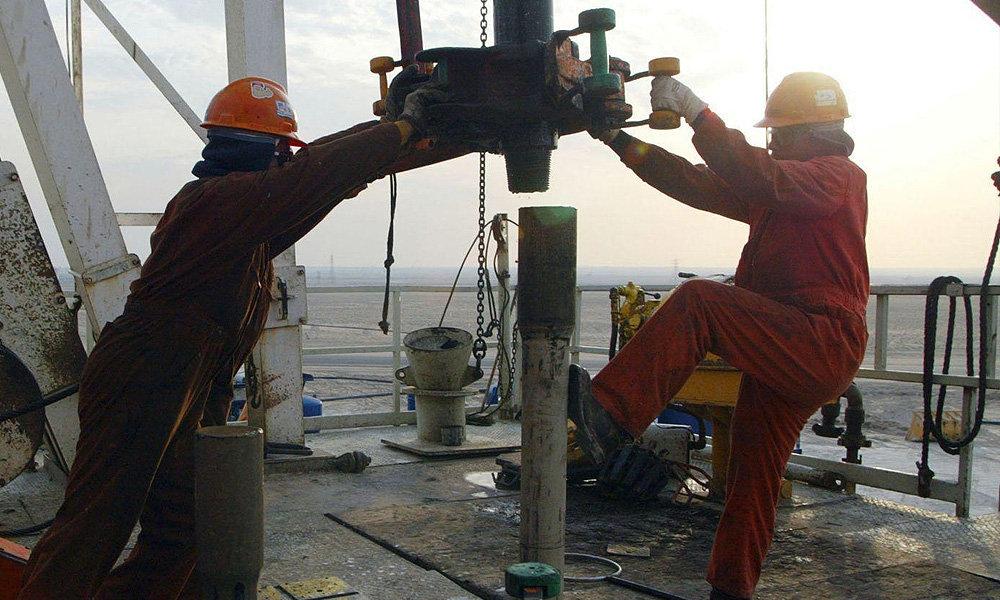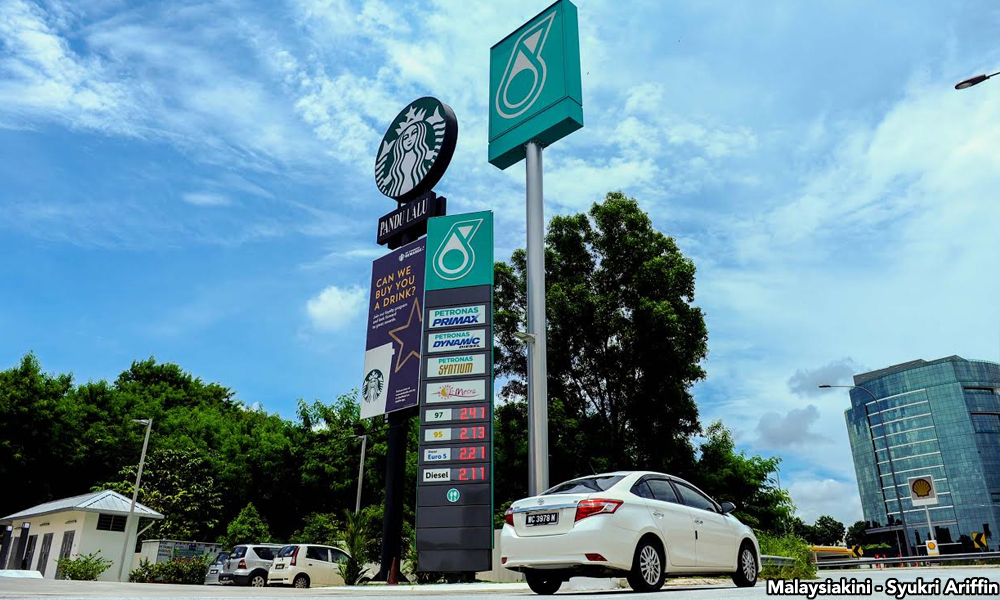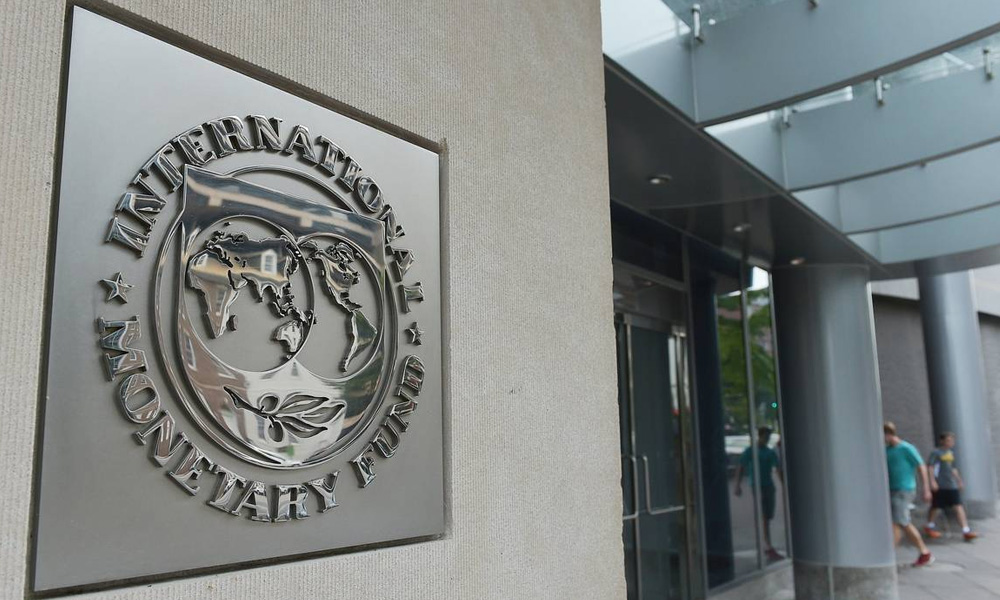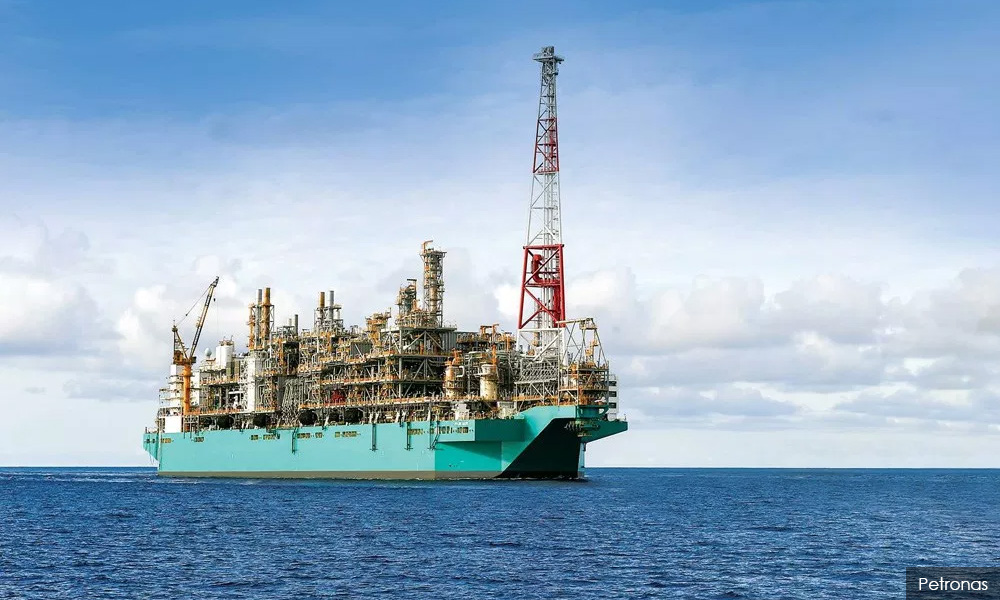Ongoing geopolitical fears, as well as global demand and oversupply issues continued to cloud the mercurial nature of the oil and gas (O&G) industry in 2018, with Brent crude, an international benchmark for crude oil prices, averaging above US$70 (RM291) per barrel against US54.22 last year.
Crude oil prices were generally higher throughout 2018, riding on supply concerns to influence price movement, while geopolitical risks with developments in Iran, Venezuela and the Middle East, weighing on such narratives.
Moody's investors service corporate finance group managing director Steve Wood pointed out that Brent had averaged US$72 per barrel year-to-date, with West Texas Intermediate (WTI) at US$66.
"The differentials (of both benchmarks) averaged US$6, but have been around US$10 for much of the year.
“The higher differentials reflect infrastructure constraints in North America, especially the Permian Basin in Texas and in Canada,” he told Bernama in an email interview.
However, the Energy Information Administration (EIA) expects global oil consumption to grow 1.5 million barrel per day (bpd) this year, which is reasonable, he explained.
All in all, Wood said the industry continued to recover from the oil price collapse of 2015-2016 as prices have been higher than what the market anticipated at the beginning of the year, hence, fuelling more optimism on the part of both companies and investors.
However, prices remained volatile as Brent ranged between US$58 and US$86 per barrel.

Equity markets too have pressured upstream companies for greater capital discipline to generate free cash flow and to return money to shareholders.
"The oilfield services sector has not improved as quickly as in previous recoveries and this part of the industry continues to be quite weak.
“There has been increased consolidation and simplification among US midstream companies’ corporate structures," Wood said.
Meanwhile, Brent crude touched US$80 per barrel on May 17, the highest level since November 2014, on concerns of falling Iranian exports following sanction threats as President Donald Trump’s decided to withdraw from an international nuclear deal with Tehran.
Crude oil prices continued to be volatile with Brent hitting US$86 per barrel in early October on supply concerns following implementation of Iranian sanctions.
The International Energy Agency (IEA) had in its report published in August revealed that a US plan to impose targeted crude sanctions against Iran could significantly impact global supply and exhaust the world's spare oil capacity cushion.
The Paris-based organisation said, as oil sanctions against Iran took effect, possibly in combination with production problems elsewhere, maintaining global supply might be very challenging and would come at the expense of maintaining an adequate spare capacity cushion.
Crude exports
Iran, a member of the Organisation of the Petroleum Exporting Countries (Opec), produces around four per cent of global oil supplies, or about 2.4 million bpd.
"The biggest question with the sanctions is how well will it be implemented and enforced.
“While the sanctions went into effect as planned, the Trump administration gave temporary waivers to eight countries.
“The sanctions’ impact on oil markets will depend on what happens when these waivers expire," said Wood.
The US has pledged to eventually halt all purchases of crude oil from Iran globally, but for now it said eight countries, namely China, India, South Korea, Japan, Italy, Greece, Taiwan and Turkey, can continue imports without penalty.
Crude exports contribute one-third of Iran’s government revenues.

Using the WTI as the benchmark, the ratings agency projected year-end prices to be at US69.10 a barrel and US$67.20 for 2019.
In early November, the IEA executive director Fatih Birol said Venezuela’s crude production was in “free-fall” and could dip below one million bpd, and hoped prices would not rise above current levels this year as it would be bad for the softer global economy.
In 2017, Opec member Venezuela produced more than two million bpd, but a deep economic and social crisis has seen output plummet.
Back home, Bank Islam Malaysia Bhd chief economist Mohd Afzanizam Abdul Rashid said the market saw commendable results from national oil company Petronas, with revenue and profit before tax up 19 percent and 26 percent to RM63.9 billion and RM18.9 billion respectively, in the third quarter of 2018.
This has benefitted local companies, especially those operating their business in the upstream sector, as Petronas is likely to lift its capital expenditure, albeit very cautiously.
In its recently published Petronas Activity Outlook for 2019 to 2021, the national oil firm has raised its assumed oil price on a planning basis to between US$60 and US$70 per barrel for 2019.
"So all in all, 2018 was a good year for the O&G industry," Mohd Afzanizam said.
The oil market was under pressure in October, along with the stock markets, as trade tensions and concerns over rising interest rates weighed on it.
Cyclical nature
Oil prices fell to a one-year low on Nov 12, deepening a rout that has plunged the energy complex into a bear market, as growing supplies are poised to swamp demand next year, with Brent crude reaching US$65.84 per barrel.
The drop came after Trump urged Opec and Saudi Arabia to maintain their current policy of gradually increasing output, which helped cap oil prices.
Bank Islam's Mohd Afzanizam noted that the trend of lower crude oil prices due to overproduction had raised the amount of risks to the Malaysian government finances due to the cyclical nature of oil prices.
"Such dynamics are difficult to account for with a high degree of precision.
“Therefore, the most sensible thing to do is to have clear plans for diversification in revenue source and at the same time, optimise expenditure plans, so that there won’t be any wastages and leakages," he added.
On Dec 20, oil prices tumbled to more than a year’s low with Brent crude falling five percent to US$54.40 a barrel, while the US benchmark WTI settled at US$45.88 a barrel, a 17-month low.
Two days later, oil prices fell to their lowest since the third quarter of 2017, heading for losses of more than 11 percent in a week, as global oversupply kept buyers away from the market ahead of the festive season and the new year holiday over the next two weeks.
Brent crude fell 53 cents or nearly one per cent to settle at US$53.82 a barrel, after falling during the session to US$52.79 a barrel, the weakest since September 2017.
Sliding oil prices are attributable to recent interest rates hikes by the US Federal Reserve by a quarter of a point, raising concerns on slowing global demand, as economic warning signs sent markets reeling across the globe.

The International Monetary Fund has warned that the storm clouds of the next global financial crisis are gathering despite the world financial system being unprepared for another downturn.
The falling trend of oil prices is clearly a downside for Malaysia, as they are for much of the region.
As a net oil exporter, falling oil prices mean that the US dollar volume of exports will be reduced in line with the expectation of a weaker global economy, as well as export orders in a number of countries.
Finance Minister Lim Guan Eng said the government would only recalibrate the 2019 Budget if the average crude oil price dipped below US$50 per barrel. The Finance Ministry had prepared next year's budget based on crude oil prices of US$70 per barrel.
Despite all the challenges, the oil and gas industry in Malaysia shows no sign of slowing down in its online recruitment activity as the sector records 19 consecutive months of year-on-year growth, up 13 percent in October, according to the latest Monster Employment Index (MEI).
On a six-month basis, the sector recorded positive growth of 8.0 percent.
A protracted trade war will be negative for global growth and ultimately weigh down demand, but Asia’s unquestionable thirst for oil is real and growing, suggesting the global market will remain stable going into 2019.
In its December meeting, the world’s major oil producers have extended production cuts through to the end of 2018, in a bid to tackle a global glut of crude and keep prices buoyant.
Opec and its oil allies introduced a fresh round of production cuts at its December meeting of 1.2 million for the first six months of 2019.
Meaningful effect
The oil cartel and other major producers, including Russia, agreed that the curbs which started in January and had lifted a barrel of Brent crude from US$40 to US$50 last year to more than US$60 now, will continue for a further nine months.
The 15-member Opec cartel has agreed to reduce its output by 800,000 bpd, while Russia and the allied producers will contribute a 400,000 bpd reduction.
The deal is in line with expectations for the allies to throttle back output by 1.0 million to 1.4 million bpd.
"Opec and Saudi Arabia in particular, continue to have a meaningful effect on oil prices through their ability to adjust their production levels.
"However, over the past couple of years, Russia’s influence has grown. US oil companies have also been rapidly growing and become nimble producers with a rising influence on global oil supply," said Wood.

Together, Opec and Russia produce more than 40 percent of the world’s oil.
Despite prices rising steadily under the restrictions, oil states have proved remarkably compliant and have not increased production as they have done during previous attempts to influence the market.
"It is still active, but numerous fissures are forming due to Saudi Arabia’s close ties with the US.
“But due to the Jamal Khashoggi affair, the US has Saudi Arabia over the barrel and from a political standpoint. It's thought the kingdom will appease President Trump happily to reduce the chances of any significant US financial sanction," said OANDA head of trading for Asia Pacific Stephen Innes, when asked about Opec's ability to influence oil prices.
In its World Oil Outlook 2018 launched in September, Opec estimated its share of crude in the global oil supply to increase to 36 percent in 2040 from 34 percent in 2017, as oil is expected to remain the fuel with the largest share in the energy mix throughout the forecast period to 2040.
Mohd Afzanizam had a different take in stating that supply-demand imbalances were still visible, judging from the latest market data.
"We believe the balance of risks to global growth is tilted on the downside.
“The rise in US interest rates will take a toll on the country’s growth as there is a time lag for monetary policy responses to have meaningful impact on the economy.
“The trade friction between the US and China could compromise global trade growth, business sentiment and efficiencies. So, all this could affect market sentiment and inadvertently, crude oil markets," he said.
In the latest IEA report, global supplies have been rising at a rapid pace, especially from Saudi Arabia, Russia and the US, which has offset supply declines from Iran and Venezuela, Mohd Afzanizam said.
"At the same time, global oil demand is anticipated to slow in 2019,” he added.
Demand for oil from OECD (Organisation for Economic Co-operation and Development) and non-OECD members is envisaged to moderate by 285,000 bpd and 165,000 bpd in 2019.
In that sense, the supply cut by oil-producing countries is warranted in order to stabilise the oil prices, said Afzanizam, adding that the key factor to watch would be the state of the global economic growth as this would limit the upside risks for oil prices.
Prior to the Opec meeting on Dec 6, Qatar announced that it would officially exit the oil cartel on Jan 1, 2019, to focus its efforts on boosting natural gas production.

Qatar is the second member after Indonesia to officially exit the oil cartel since the bloc was formed in 1960.
Qatar joined Opec in 1961, one year after the organisation was founded. The 15-nation Opec supplies about 44 percent of the world’s crude oil collectively.
"Qatar’s exit has little physical impact on the oil market, since it is primarily a natural gas producer.
“But, it does send a signal to the market about unity within Opec, which could lead to greater market concern about the organisation’s discipline and consequently, increase oil price volatility," said Wood.
- Bernama

